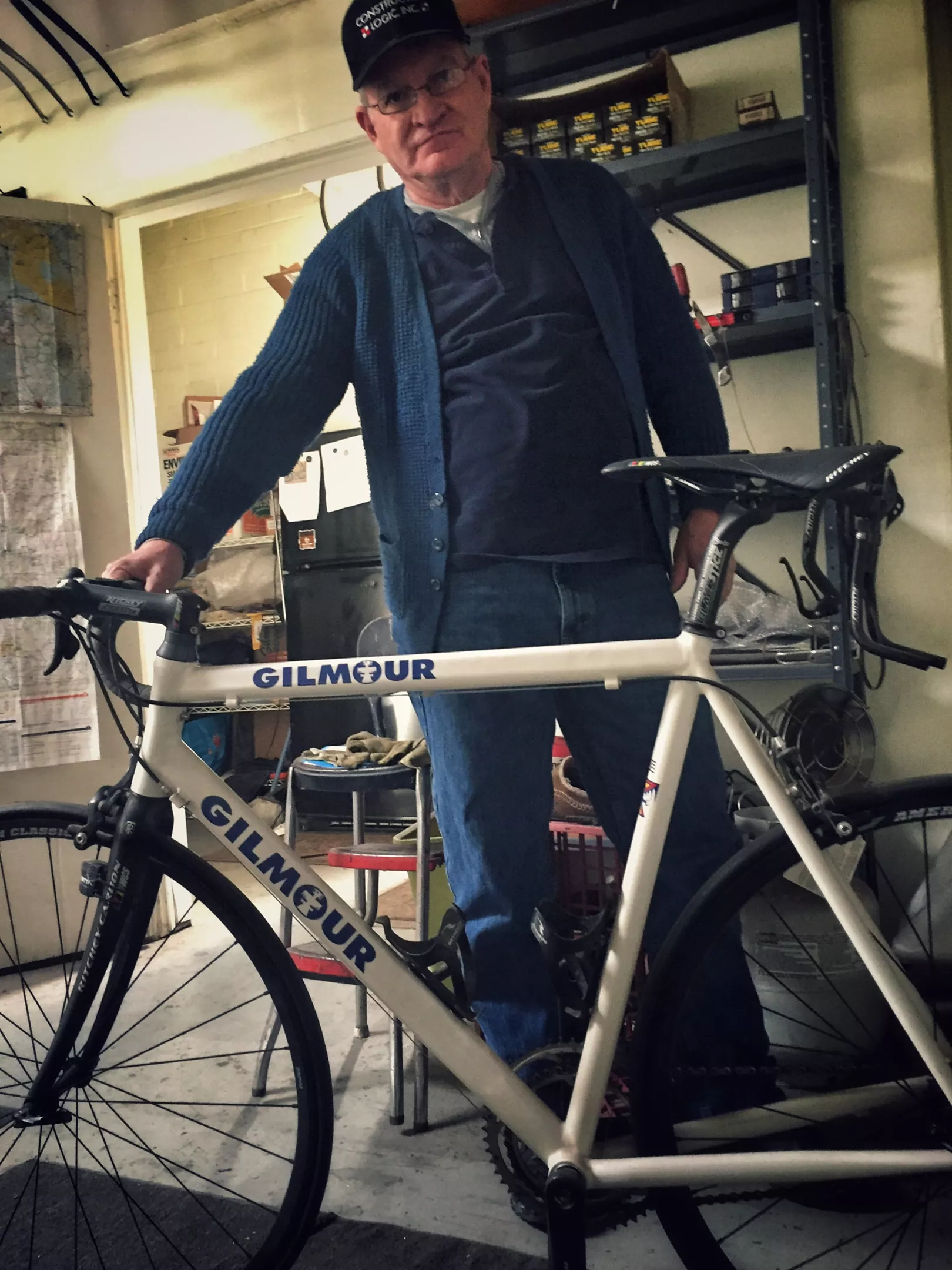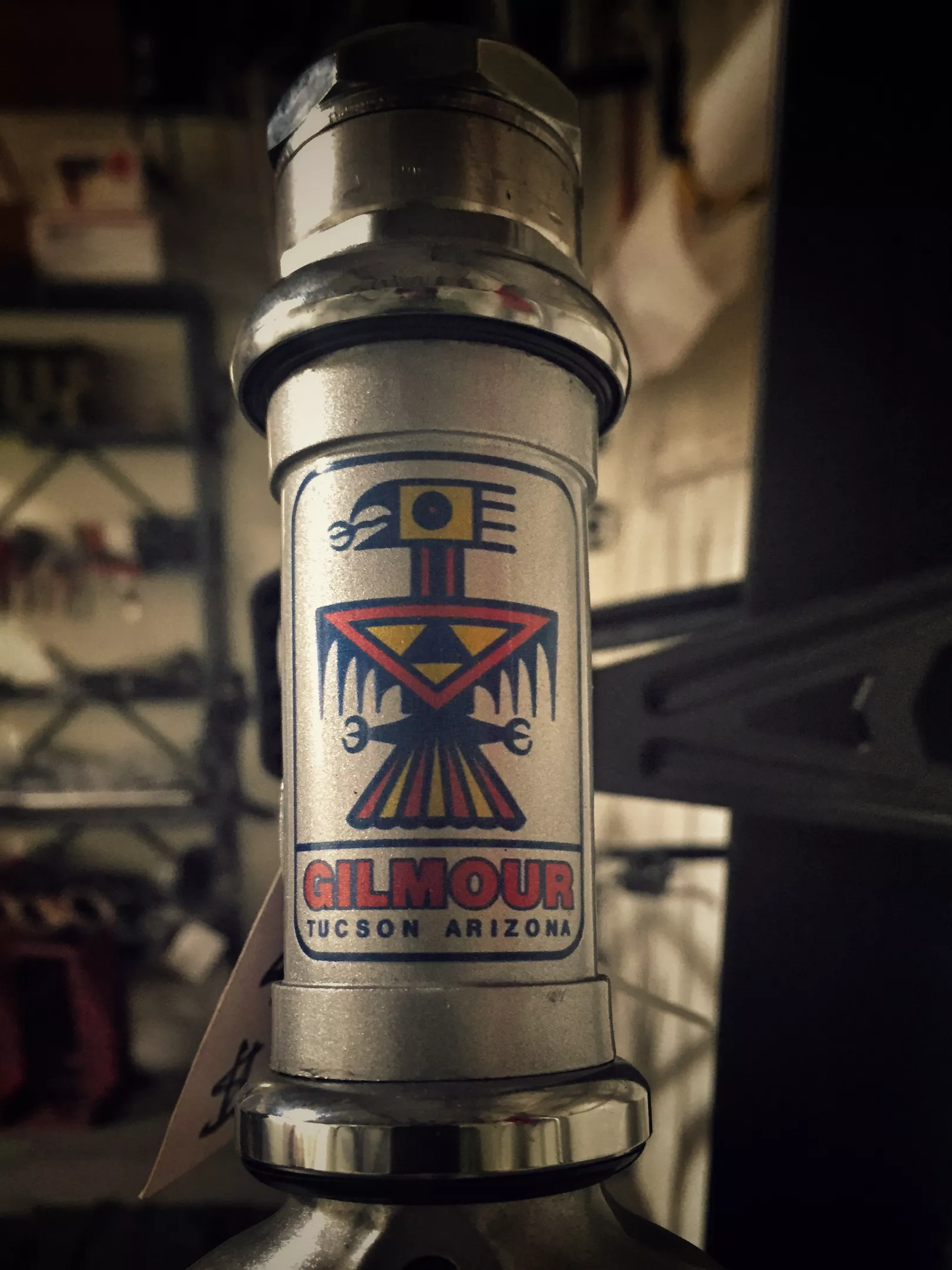


Came to with a blurry finger in my eye. It lifted away, was attached to a hand that was attached to an arm that belonged to a guy with a big forehead wearing a white laboratory smock. Next to him was a chubby nurse with pretty bangs. She was holding two little paper cups, one contained water and the other pills, which she handed to me, and said, "Swallow." I sat up. My head thundered. One side of my body flared in pain like it'd been dragged over a giant cheese grater.
"You have a concussion, son," the man said. "We've cleaned and bandaged the abrasions on your body. You're banged up but you'll be fine."
I swallowed the pills and water and rested my head back down on the pillow.
The previous hours returned:
My handmade, emerald-colored Gilmour hummed beneath me as we tore up a hilly road near the red cliffs outside of St. George, Utah. Sundry details included the stinging in my chest and legs, the crusting snot on a shoulder of my long-sleeved team jersey, the smell of pines and horse manure. I was in a breakaway group with older bike racers, well-trained, lithesome gents like future Olympic gold medalist Alexi Grewal, and the race winner on this particular day, surfer-blond national team guy Larry Shields. We motored turns in a "pace line," creating a slipstream, backs low and straight, aerodynamic. We had probably 30 seconds on the field and our lead was increasing. We crested a hill and began to sweep down a descent. My teenaged legs, powerful little pistons informed on thousands of training miles, controlled by my bursting heart, and an inner agony that controlled my nervous system, told me that my body had its own mind and no way would it slow down. We were less than 5 miles from the finish of the race, which started 50 miles ago.
I was a boy among men in this sport of suffering, bicycle racing my religion, my bone marrow and blood. I figured I was going to be a top European pro, as did Andy Gilmour, the guy who built my expensive road bike and gave it to me for free. His circumstantial generosity and sponsorship helped me to afford things like travel and to enter races hundreds or thousands of miles away from home.
Then the gaping pothole. Plowed right into it and the bike fishtailed every which way and yet—Holy Christ!—I managed to keep the thing upright and careen forward. But I could no longer steer. Something in the bike had snapped. I couldn't fucking turn. Didn't stop because I was arrogant, figured I’d still win. I thought that if the road stayed straight I'd make it to the finish line.
Insane. Thinking.
I sailed off the pavement, airborne into an arroyo at 30 miles an hour.
Then the finger in my eye.
A steering column is the part on a bike that connects the handlebars to the front fork. Gilmour had drilled holes in it to lighten the bike even more. Maybe not the smartest move. I should've quit the race. But I was 15 years old.
Cut to late December 2015. I haven't seen Andy Gilmour since the 1980s. We're standing in his Gilmour Bicycles showroom, whose walls are lined with bikes—dozens of his custom frames as well as other vintage machines in for restoration. The showroom's attached to a spacious and somewhat organized workshop, where Gilmour creates and repairs bikes and frames. It smells like a Jiffy Lube, and is outfitted with milling machines, high-pressure welding cylinders, frame straighteners, industrial-sized ovens for paint and welding purposes, myriad tools, and creased bike-racing memorabilia.
This appointment-only shop sits in a little industrial area near Tucson and Broadway boulevards. Gilmour's dressed in blue; blue sweatshirt, blue cardigan, blue jeans, and he's a little heavier now, his hair's gone gray. He's got an impish grin. His impossible laugh comes fast and furious:
"You were my crash-test dummy! Ha-ha-ha-ha-ha-ha."
Indeed.
Gilmour always had a priestly passion for his work. So it's no wonder he's still building custom-made bicycles for a living, having survived big shifts in bike technology. He’s churned out more than 5,000 frames since beginning in '74. Not mass-produced bikes in uniform sizes and shapes; no, his specialty is hand-made racing—or heavy touring—machines designed specifically for the purchaser's body specifications. They're not cheap. Gilmour takes in limb lengths and even hip placement on the bike to determine the most efficient pedal strokes, as well as tube angles and frame stiffness, all details that have a cumulative effect on how a bike rides and handles.
Some want just the frame and others want the full bike—the wheels, handlebars, derailleur's, etc. There's also aesthetics to think about, the paint and colors. And when you get to know the person who's building your frame from a pile of tubes, it gives the bike a kind of soul, some personality, corny as it sounds.